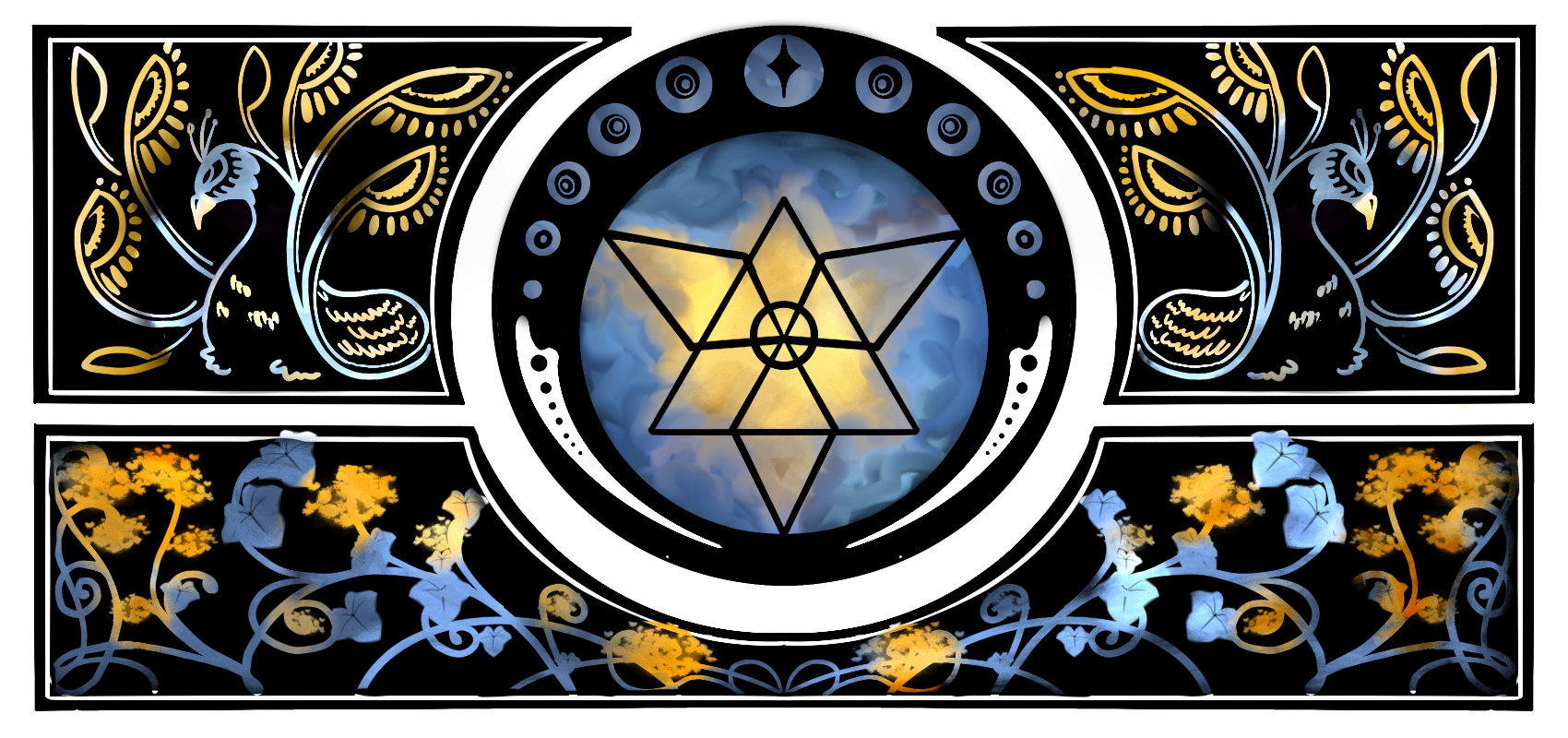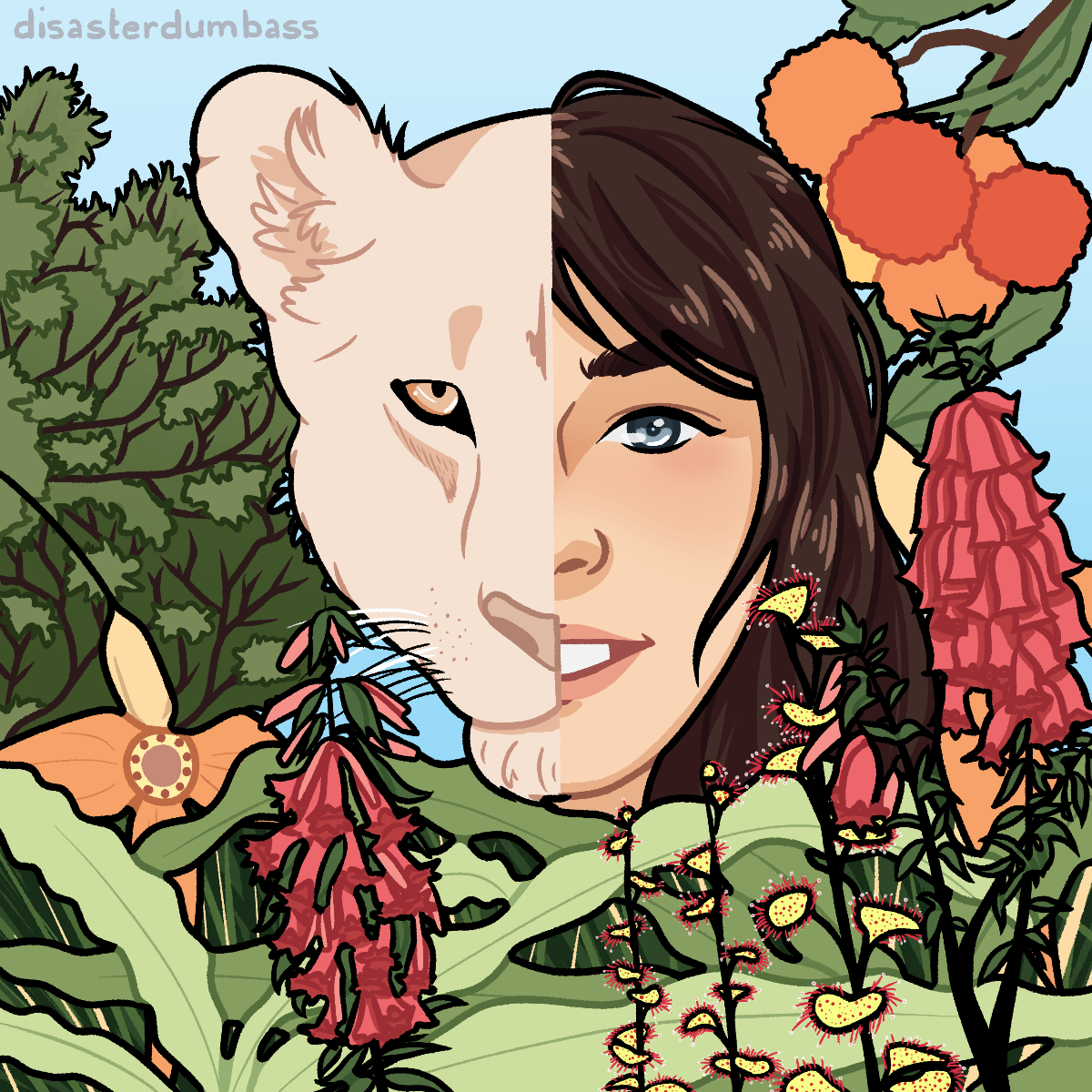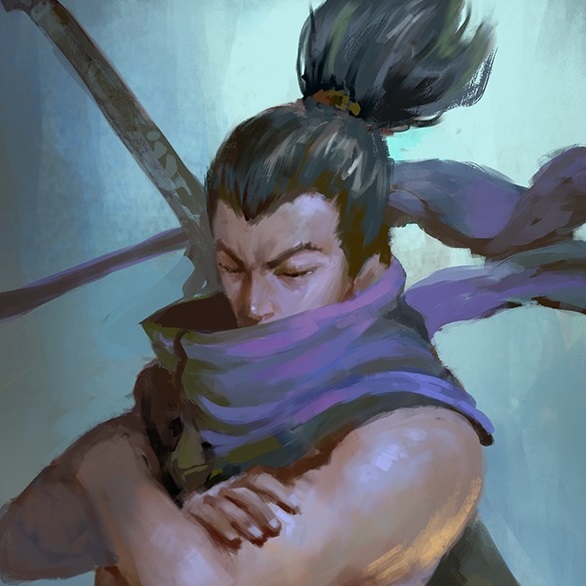They are said to have come from the moon, down from the stars, and sunk like craters into the earth, bore too deep and live like moles, rats, pits, --all blemishes on the land's once fair skin.
The world has died once, say the sages who divine from The Ghosts of the Machines, the Larva Machina, and the conjunctions wait to prove them right no matter how we toil to delay them. The Sun will go out, and the Moon will crack open a silver sunrise over our broken beauty, and the Tribe of Faust will still be there.
How the Faustites made Fashion Terrifying
Beauty is one with the
charagma, ever changing and fluid, eclectic.
As such, the Faustite civilians rejoice when they conquer another or even loosely partake in conquest against another. They get to enjoy changing their colors to match their prey's favorite colors, and they will use the garb they acquire to blend in with their own. As such, one's expression will be not exactly the same as the next. But their commonalities are this:
- They adore the cultures of others with a gross infatuation. They will go out of their way to look like their favorite group of people-- and every season of war brings a new fad. To them, giving those they engage with the time of day as to mirror their fashion choices is a sign of great courtesy and respect to the Faustites. To them, it makes them more than animals, above the common savage, but it makes their victims no less their prey.
- Faustites prefer fluid clothing. If their prey's clothes are tight, fitted, or lacking the ability to move fluidly, "dance" as Faustites would call it, the tribesmen will blend together a portion of the clothes that are tight, usually a sleeve at most. Tight clothes are fads that are done away with quickly, and have led to small skirmishes with other opponents, even allies, in order to borrow their fashion. These mock battles are not as fierce as their regular conquests. At the very least, the people will try to adapt the color of materials of their opponents to their own styles.
- However, if the Faustites can find nothing of the other country's clothes that they like, or if there is a great respect for their prey, they will attempt to graft on the skins of their recently dead prey to their own. This macabre practice is a well marked and ritualistic practice known as The Doll's Keen. It is as much for the sake of remembrance and woe, taking one's prey into ones body, as it is a sign of dominance: "You are a part of Me." The charagma is often utilized in this process to enable the piece of flesh to be combined without the body rejecting it. As such, many of these Faustites appear to be a literal patchwork of other cultures, much to the general public's chagrin.
- Additionally, and most normal of their practices by general moral standards, Faustites are not opposed to stealing military advancements in armor to be incorporated into general wear. As such, pauldrons are common place, cuirass may be worn on formal occasions, and others may dress up as their Agiera on extremely formal occasions, though this last is seen as ostentatious; it would be better to dress the Agiera as the most recently conquered prey-culture, as is often and festively done.
Children and the Ideals of Beauty
Now, Aside form military practices, childbirth is a great thing. Each new babe is a new canvas with the person who will shape it as they grow until it reaches its full adult size. Generally speaking then, it is considered to be lucky to be born tall, or acceptable to become fat in order to have a larger canvas, if one accepts the objectifying metaphor. As such, when a Faustite reaches adulthood, they may start "
taking marks". The larger the body-canvas to work with, the better.
The faustites extend this metaphor beyond body type however, and seek out mates who will create a baby with blonde hair, pale skin, and light colored eyes; as a blank, white canvas, these kinds of children are thought to more easily contain the charagma. As such, an albino child will be glorified, but heavy expectations will be put of the child to fill their canvas. As such, not many Albino children live past young adulthood, after their few marks. In order to curb this, deformed children, will be placed with the albino children; this is due to the fact that Faustites perceive these deformed children with reverence; to them, those who are born so have fought with the charagmic birthing waters of the mother and won. As such, children born normally are thought to be spared by the charagma.
As a side note, still born children are often marked onto the body of the mother and father. it is not a mark of shame, but to leave a mark of undying love for their babe on their skins.
What is broken has fought to return, and
what is empty will be made whole again.
Conjoined in the Charagma we shall meet,
and in this war of life,
our victories shall be sanguine, bittersweet.
Death Poem by unknown Faustite Beserker
Therefore, the pairing of the deformed and pale child is is a useful concept of duality that plays into the culture, as those infected too terribly with the charagma will begin to lose their minds, and it is the deformed child's duty to kill them when this happens or gets out of hand. These children are often not grafted back onto their parents.
They won against the charagma before. They can do it again.
--Unnamed Parental Testimony in "Charagmic Casualties"
Gender and Courtship
Gender is a moot point among the Faustites. They admire all who war and encourage all to participate. It is a struggle of ideas and identity, which is another reason why the culture is studied and assimilated as quickly as possible.
Aside from this, Men and Women do dress differently. While displays of one's charagma is important, men are allowed to be a little less dressed than a women as they advance through the charagmic stages faster. Women also tend to clothe themselves sparingly, but are seen wearing veils.
Love is War, A Festival of Brutal Courtship
Courtship is brutal, as courtship is seen as the unifying of two bloods. As such, when a proposal is made, by man or woman, it is done publicly and the one with the strongest blood (meaning here both strength, virility, and binding to their charagma) will be the one to make the claim. It became a game, a festivity, but one where family lines can be at stake.
The proposee will sit in a tent guarded by his or her family. It is the family's job to fend off all who try to make their way to the tent, but they cannot be killed; instead, they can be disarmed, or made to fall onto their hands or backs. This is signifies that they can no longer defend the proposee.
Falling on one's hands and backs also signifies that anyone trying to win the proposee's hand (including the proposer!) is also out. However, any suitors who participate can be killed, but not by the proposee's family members. Instead, the proposee is given a dagger with which to cut themselves and their desired mate in order to unify their blood, and defend themselves. The proposee can join in the fight at anytime, but if they are cut with the daggar and their bloods are unified, it is noted that only those two may have children. Due to many proposals going awry for this reason, Polygamy/andry is allowed, but only the one they can have children with is the one with whom they share blood.
There are a few other observances of this process, such as:
- It is considered bad form to propose not out of good faith (ie. without love/out of nowhere) or in the hopes of avoiding a matchmaker (when anyone turns 25, a person is picked for you
- It is considered bad form to murder the one who proposed to you during the ceremony, though the offer can be formally contested by the proposee's mother or father (depending on the gender of the proposer).
While "1)" may not be observed as much as it used to be, for fear of marriages without love, or without the passion of murder, it is still looked down upon to be spontaneous in one's proposals.
Duality--Not Death--in Faustite Relationships
Relationships are about duality, so the phrase "Opposites Attract" plays well here. However, it is noted that one individual may have many sides, like that of the "maiden, mother, crone". So, while divorce is not uncommon, it is rather seen as a transition to a new phase of a person's life.
It is with the acceptance of change, of the self, and of the other that relationships here revolve, and it is a matter of respect and admiration that each Faustite considers to reflect their integrity as a person.
--Faustite Matchmaker
Naming Traditions
Alphia, Azercena, Benisima, Beatrix, Cresens, Dinas, Elan, Festa, Gaudiri, Heli, Hela, Iuherona. Iona, Madibel, Manan, Nemiya, Ozicena, Presens, Rhophael, Seffron, Sem, Tamara, Tam, Thera, Urias, Yen, Ziona
Ainen, Arides, Benisus, Carderes, Disidero, Euphelus, Eris, Eraticles, Faunus, Genz, Inaius, Iugemi, Licentus, Levantrus, Maier, Mart, Pollux, Remus, Salacer, Tacitus, Vert, Verit, Yaster, Zionus
Agrios, Bellos, Cellos, Celvicte, Demi, Erip, Faun, Firosi, Glauce, Iapthe, Iovite, Lito, Mar, Nemenios, Persephios, Presci, Riagos, Sipos, Testani
Amadeus, Calixtus, Crescens, Desiderius, Formindius, Horata, Igdrasilus, Iusaurus, Leocadium, Maurum, Nexadrin, Paschalia, Presidia, Rinfeldris, Sabilis, Sollomnar, Ursin, Veritrix, Zeprianis






A wonderful opening paragraph!
I will refrain from pointing out many typos— though this sticks out quite a bit more.I quite like the concept here of the Faustites mimicking the stylings of their prey, there's something both honorable and mocking in that— a combination I seldom see. I'd be curious to know if lack of dyestuff has ever gotten in the way of their copying— and what they've done to alleviate those situations.
That could be perfect for sidebar content— something I think you could greatly benefit from having— filling out your sidebar can really help with an article's looks! Using a "related articles" section, with block links, adding quotes, and images can all help pad it out— you don't need to fill it with paragraphs of text!
What is an Agiera? Conlang can be a bit hard to follow for readers— and simply adding a tooltip explaining the term can help a lot— which you seem to have done throughout the rest of the article already. I assume you just missed this one.
I love the whole idea of body modification taken to an extreme here— an entire culture focused on it, seeing it as a form of art— and changing their habits and bodies to facilitate this.
This sentence is a little confusing, do you mean their first few marks? I'm not entirely sure. Why do they die so young, though? I can guess that perhaps they receive too many marks, but for all I know there could be health complications for albinos beyond that.
What are the charagmic stages? A tooltip, or perhaps considering how much information may be required here— a link to an article on this may help in understanding.
I like the courtship ritual here, it's an interesting, brutal take on things for sure.
Overall, you've got a good article here— a few things need to be explained or clarified, and the sidebar could be filled— but for the most part it's already solid!